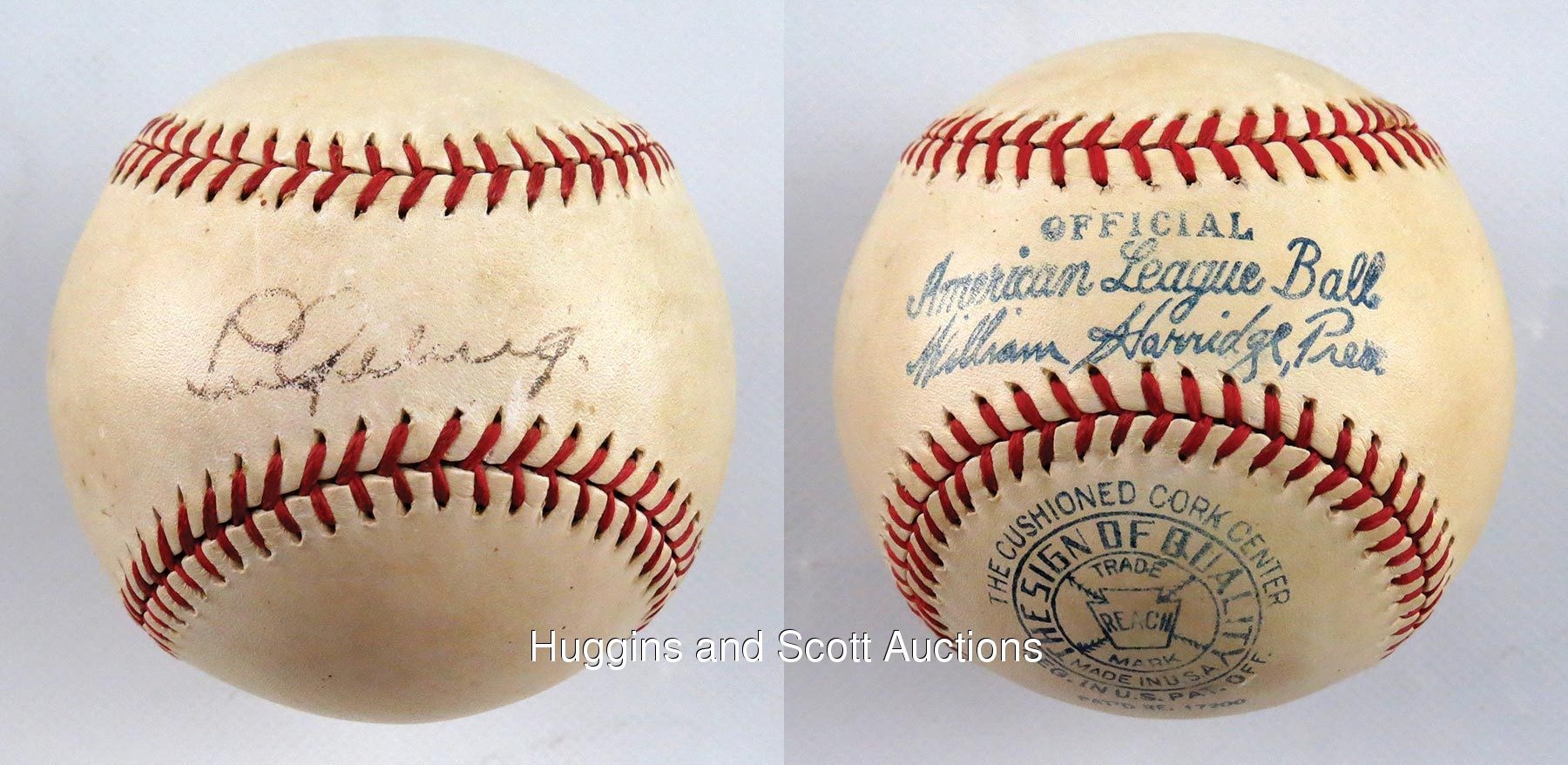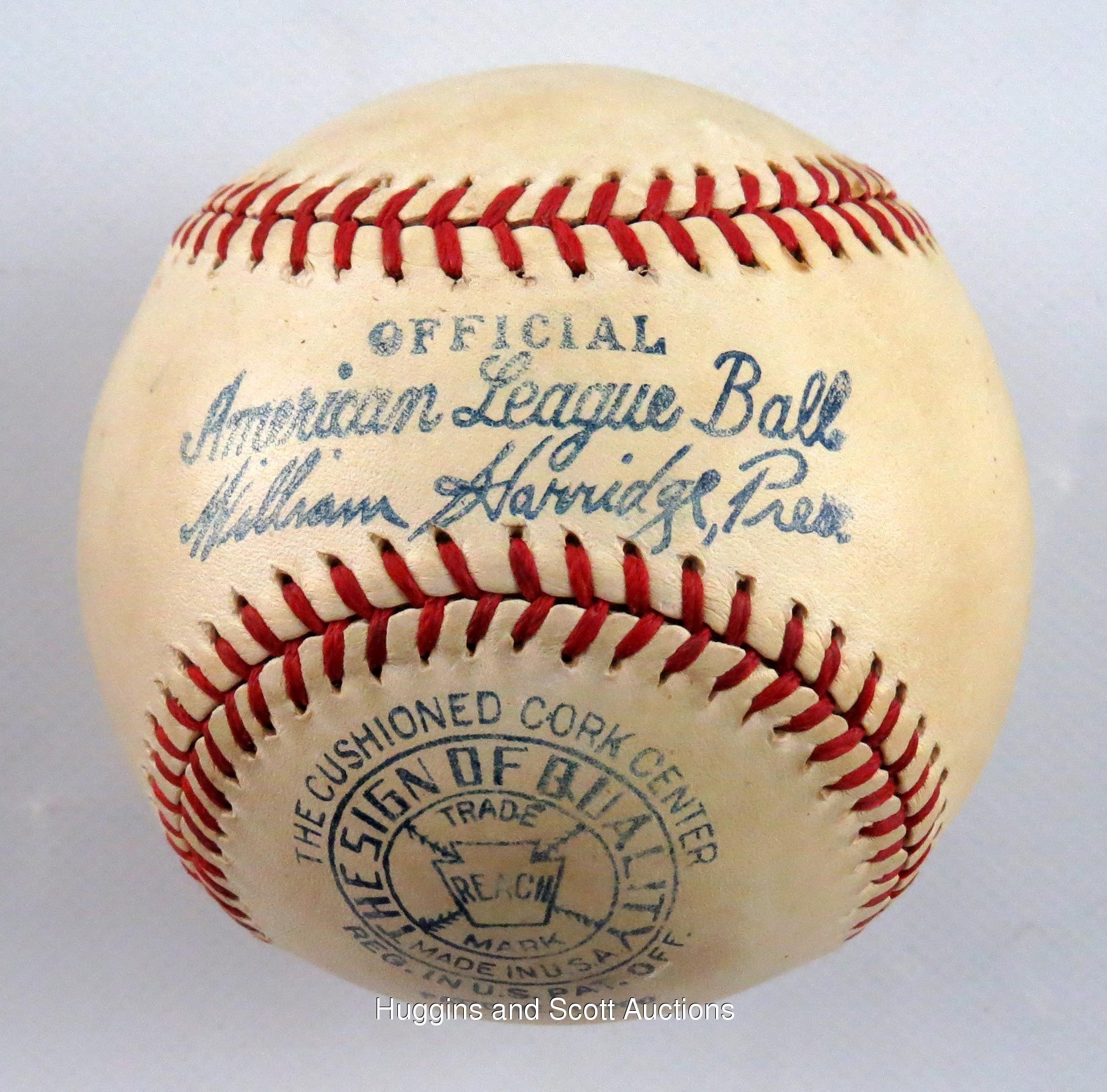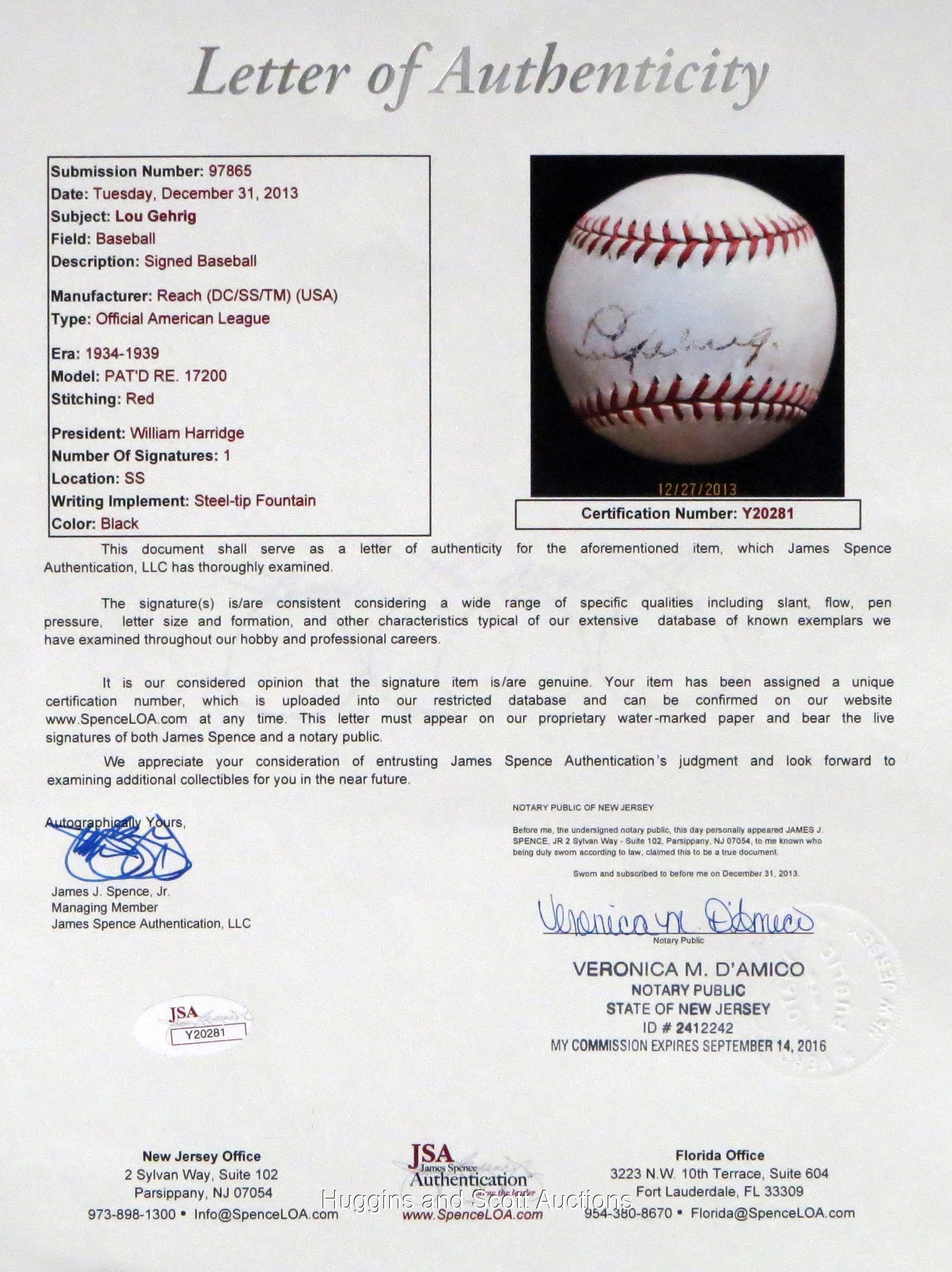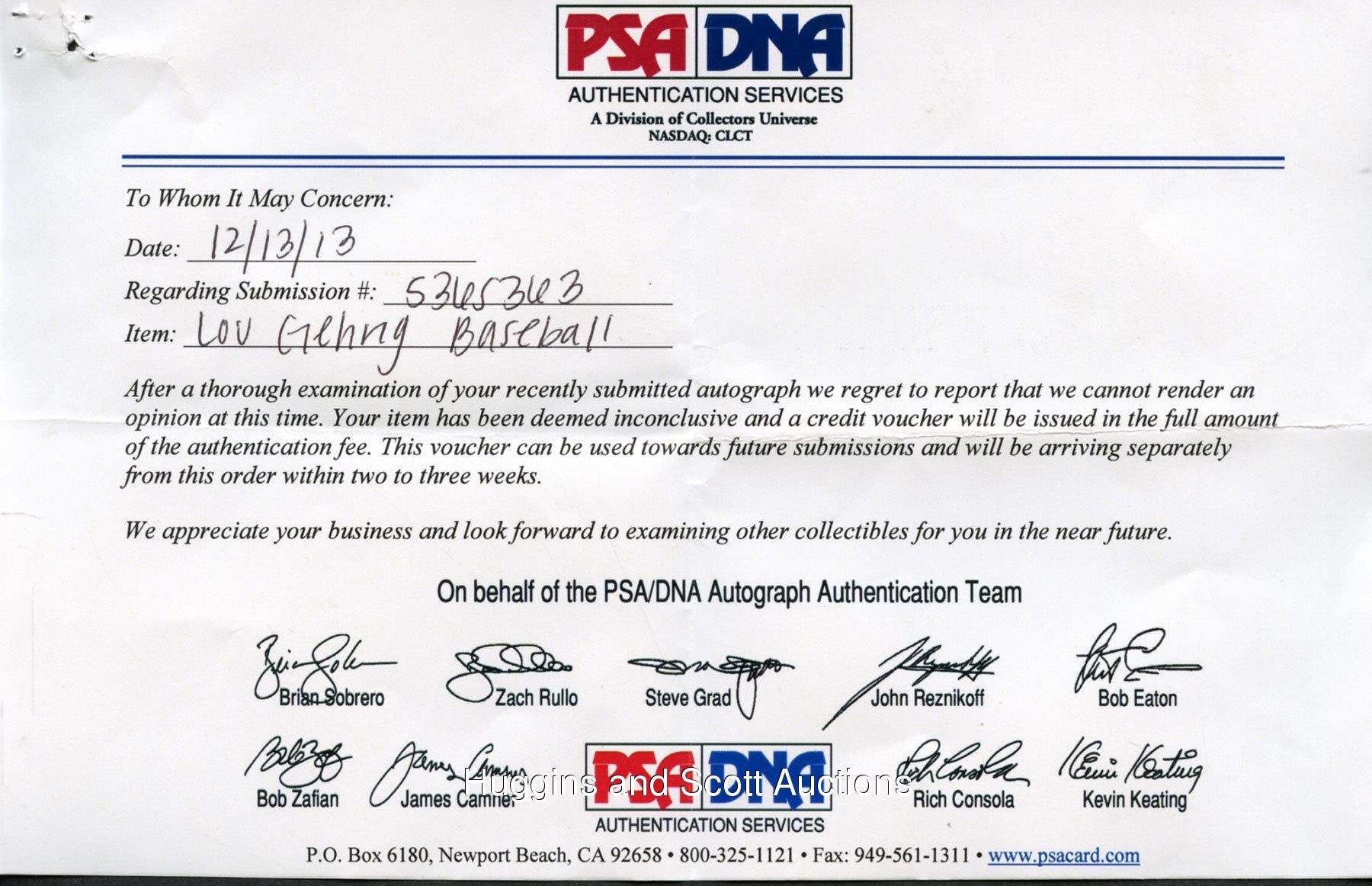Search
Lou Gehrig Single-Signed 1934-1939 OAL Harridge Baseball - Full JSA
- Sold For: $27,255
- Year: 1934
- Auction: 2014 February
- Lot #: 1
- Auction Category: Autographed Baseballs/Flats/Photos
Endless accounts cite Lou Gehrig’s humble demeanor, tireless work ethic and loyalties to both team and family. As trite and storybook as these qualities (especially the combination thereof) may seem, there is no refuting their validity. Often overlooked are the impressive numbers that defined a career perhaps unlike any other. While Gehrig’s contemporaries were naturally inclined to wax poetic in recounting the quiet superstar and his selfless manner, his astounding numbers are (well, at least “were”) even more obscured in that they were realized in the sizable shadow of teammate Babe Ruth. And as we cross from the diamond into the realm of collectibles, the situation is the same. Despite statistics often favoring Gehrig, Ruth’s admirers could seem tenfold to the amount of fans seeking a handshake or an autograph from any other player. Gehrig remained compliant with autograph requests despite the fact that most were rendered on side panels, usually complementing a Ruth signature. This particular example is a rare departure, with Gehrig deservedly occupying the sweet spot of a ball that dates to the peak of his career and his tragic demise, as well.The medium is an OAL Harridge ball (grade “6”) with bright-red laces and vibrant trademark stampings that date to 1934-1939. Executed on the sweet spot in black-ink steel tip fountain pen, Gehrig’s flowing signature projects (“5-6”) strength and clarity, with brief interruptions preventing higher assessment. Reflecting his unassuming qualities, Gehrig’s signature remained consistently small. The penmanship itself is elegant with curvaceous upper-case “L” and “G” characters followed by remarkably even finishes of the first name and surname, respectively. Gehrig sweet spot pennings are fleeting indeed, as many of his signatures are found on multi-signed spheres with the sweet spot almost always reserved for Ruth.The ball’s appealing status as a Gehrig single-signed keepsake is consistent with the prominent trademark stampings. The keepsake definitively dates to 1934-1939, a span whose beginning marked the final season of Gehrig and the aging Ruth in the same lineup. The end of that timeline, of course, coincided with Gehrig’s mysterious and sudden decline and subsequent fatal diagnosis. In between, however, he was the face of a franchise on its way to an unprecedented four successive World Series titles. And while another phenom (Joe DiMaggio) came along after Ruth’s departure, Gehrig maintained a quiet reserve and steady performance. Consider: in the 10 full seasons during which Gehrig and Ruth were teammates, Gehrig out-hit Ruth seven times and had a higher RBI total seven times, as well. Following Ruth’s Bronx tenure, Gehrig remained consistent and spectacular, winning the team Triple Crown in 1935, two-thirds of it (home runs and RBI) in 1936 and hit a team-high .354 in 1937, all the while yielding to more flamboyant (or at least more vocal) teammates as they basked in the spotlight.As Gehrig single-signed orbs go, this one has few rivals in the scarce population. Accompanying is a full photo LOA from JSA, as well as a letter documenting the ball’s lineage. Please note: we also submitted this ball to PSA for grading and encapsulation. They returned the ball with a letter stating: "At this time, we are unable to render an opinion."Handwritten in graphite pencil, the accompanying letter of provenance reads (in full):”My husband’s father was very European, autocratic with his son an (sic) only child. His father did not spend time with him, pay attention to him or talk to him. It was a very quiet household. My husband Joe rarely talks about his father. I knew his father went to the baseball game. I assumed he had taken his son as fathers everywhere do. My dad took me and I was a girl.Joe was in grade school. His mother was having a party in the back yard. It was early evening. Joe’s father returned from the ball game with his brother-in-law, Joe’s uncle Roy, a baseball fanatic his entire life. For vacation every year he and his wife went to the World Series. When he retired, he ushered at the stadium. Joe’s father showed his signed Lou Gehrig baseball to everyone at the party, including his son.Joe was sent to bed. Nothing was said about the ball the next day. Joe did not see it again.Joe graduated from high school. He and his best friend wanted to go to college, but they didn’t have the money. They decided to join the army so they could go to college on the G.I. bill. They would get through it together. Of course, they were separated immediately.Joe was sent with the occupation troops to Italy. He served his time and received his honorable discharge.When Joe returned home, he walked into his bedroom, and there was the Lou Gehrig baseball placed on top of his bureau. L.G. now belonged to him.”




